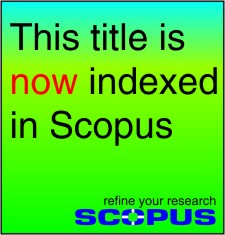Study of Phenolic Compounds of Moringa oleifera Leaf Extracts and Their Potential as Antioxidants
Ahmed Aliwi Jassim, Riad Shamkhi Ali
This study aimed to determine the content of Moringa oleifera leaf extracts of phenolic and flavonoid compounds and their antioxidant capacity. The method of quantitative estimation of phenolic and flavonoid compounds was used, and the DPPH test was used, measuring the reducing power, the ability to bind the ferrous ion, and the ability to scavenge the peroxide radical for the extracts. The results of estimating the total content of phenolics showed a significantly excelled of the alcoholic extract, recording the highest phenolic content of 864.4 mg/100g compared to the aqueous extract, which amounted to 353.2. mg/100g, while the results of estimating the total content of flavonoids showed a significantly excelled of the alcoholic extract of Moringa oleifera leaves, giving the highest content of 225.1 mg/100g compared to the aqueous extract of 42.7mg/100g. The results of the DPPH test for both the aqueous and alcoholic extracts of Moringa oleifera leaves showed a significantly excelled of the alcoholic extract, as it gave the highest percentage of inhibition, which amounted to 81.36% at a concentration of 1 mg/ml, while the aqueous extract gave the highest percentage of inhibition at the same concentration, which amounted to 72.46%. The results of examining the reducing power of Moringa oleifera leaf extracts indicated a significantly excelled of the alcoholic extract, which recorded 85.67% compared to the aqueous extract, which reached 64.00%. The results of the ability to bind ferrous ions of the Moringa oleifera leaf extracts indicated that there were significant differences in the ability to bind between the aqueous and alcoholic extracts, which was 14.90. 21.33%, respectively. The results of measuring the ability to capture hydrogen peroxide of Moringa oleifera leaf extracts showed significant differences in the aqueous and alcoholic levels, which amounted to 47.24 and 66.32%, respectively. It is noted from the results of this study that there are high bioactive compounds (phenols and flavonoids), which have many important functions. The antioxidant capacity results also indicated the high capacity of the extracts and their role as natural antioxidants, and thus the possibility of their use in food applications.
Keywords: Phenolic compounds, Moringa oleifera, Antioxidants, Plant extracts



